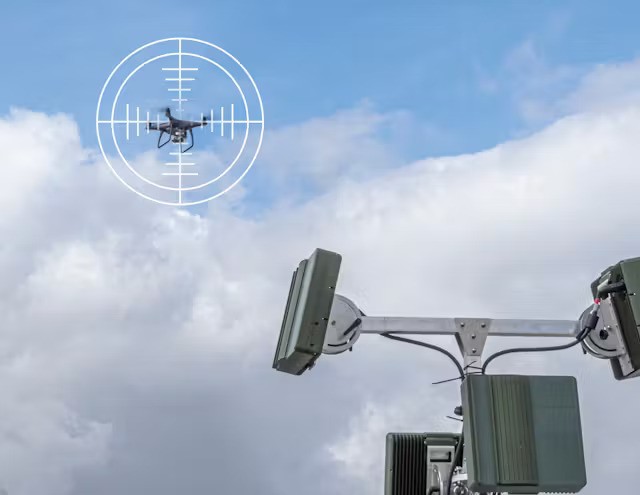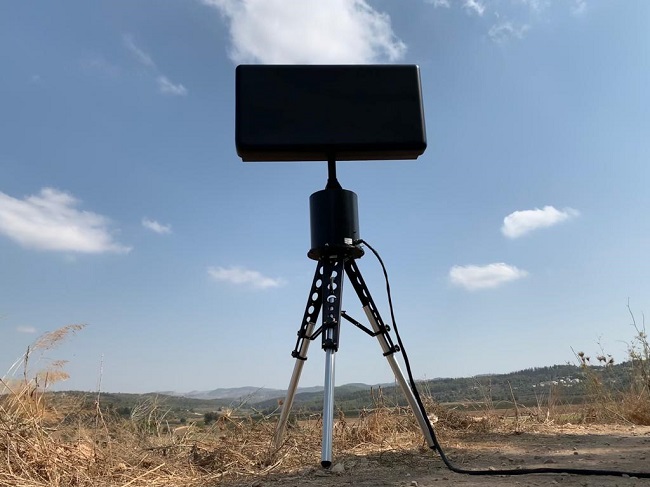Radar vs RF Detection in CUAS: Which Works Best for Your Mission
The quick development of drone technology in the field of Counter-Unmanned Aerial Systems (CUAS) has created new difficulties for defense and security experts. The technology responsible for identifying and eliminating these dangers must advance in tandem with drones’ increased speed, stealth, and autonomy. Radar and radio frequency (RF) detection are two of the most popular detection technologies in CUAS. Each has optimal use cases, limitations, and strengths.
In order to assist technology integrators and security planners in selecting the best detection technique—or the best hybrid approach—for their particular mission requirements, this paper attempts to present a thorough comparison of radar and radio frequency detection in CUAS systems.
Table of Contents
Understanding the Basics
What is Radar Detection in CUAS?
Radar (Radio Detection and Ranging) systems use electromagnetic waves to detect and track objects in the air. In CUAS, radar systems emit radio waves that bounce off airborne objects and return to the radar antenna, allowing the system to determine the object’s distance, direction, speed, and size.
What is RF Detection in CUAS?
RF detection involves scanning the radio frequency spectrum for signals typically emitted by drones and their controllers. It identifies drones by detecting and analyzing their communication links, monitoring data, and video downlinks.

Core Comparison: Radar vs RF Detection
| Feature | Radar Detection | RF Detection |
|---|---|---|
| Detection Principle | Reflects radio waves from physical objects | Detects communication signals between drone & controller |
| Line of Sight Requirement | Required, may have blind spots | Can detect around obstacles if RF signal penetrates |
| Range | Typically 1-10 km depending on system | Typically 1-5 km, may vary with signal strength |
| Stealth Drone Detection | Can detect non-communicating drones | Cannot detect autonomous or non-emitting drones |
| False Positives | Can mistake birds for drones (without AI) | Can pick up unrelated RF noise or false alarms |
| Speed of Detection | Near-instant with high-end radars | Real-time, but may lag with signal hopping drones |
| Power Requirements | Generally high | Lower compared to radar |
| Weather Resistance | Effective in most weather, can be impacted | RF propagation less impacted by weather |
| Cost | Expensive due to hardware | More affordable and portable |
Pros and Cons of Radar Detection in CUAS
Advantages:
- All-Weather Capability: Works in darkness, fog, and light rain.
- Can Detect Non-Communicating Drones: Especially useful against autonomous UAVs.
- Longer Detection Range: High-power radar can cover large perimeters.
- Precise Tracking: Offers speed, direction, and altitude data for tracking and neutralization.
Limitations:
- High Cost and Complexity: Installation and calibration require expert handling.
- Susceptible to Clutter: Without AI or filtering, radar can produce false positives from birds, trees, or vehicles.
- Line of Sight Dependent: Obstructions can block signals.
Pros and Cons of RF Detection in CUAS
Advantages:
- Affordable and Lightweight: Ideal for mobile or temporary installations.
- Low Power Consumption: Easier to operate in field conditions.
- Detection of Drone Type and Model: Signature analysis can reveal drone identity.
- Silent and Passive Detection: Unlike radar, RF systems do not emit signals and are hard to detect by adversaries.
Limitations:
- Cannot Detect Silent Drones: If a drone is autonomous or not transmitting, it remains invisible.
- Susceptible to Signal Masking: Urban environments can clutter the spectrum.
- Limited to Known Protocols: May fail against customized or encrypted systems.

Use Cases: Which Detection Method is Best for Your Mission?
1. Military and Border Security
- Recommended: Hybrid (Radar + RF)
- Autonomous drones, enemy stealth UAVs, and swarm attacks require robust coverage.
- Radar detects all aerial movement, RF provides signal intelligence.
2. Airports and Aviation Security
- Recommended: Radar-centric with RF Support
- Prevents disruptions from unregistered drones.
- Radar identifies airspace breaches, RF helps track controller location.
3. Critical Infrastructure (Power Plants, Data Centers, etc.)
- Recommended: Radar + AI filtering
- High-risk assets need early detection.
- Radar tracks unknown UAVs even when RF is silent.
4. Event Security (Concerts, Stadiums, VIP Zones)
- Recommended: RF Detection
- Quick deployment, cost-effective.
- Most hobbyist drones can be tracked via RF signals.
5. Urban Surveillance & Smart Cities
- Recommended: RF with AI Integration
- Densely packed areas benefit from passive detection.
- Lower cost allows multiple units for wide coverage.
6. Mobile and Tactical Operations
- Recommended: RF + Portable Radar
- Lightweight systems for security forces on patrol.
- Real-time tracking and jamming based on RF inputs.
The Power of Fusion: Radar + RF + AI
Many modern CUAS systems are now combining radar and RF detection, layered with AI algorithms to eliminate false positives and increase reliability.
Benefits of a Fused System:
- Redundancy: If one system fails, the other continues.
- Enhanced Detection: AI correlates radar pings and RF signals.
- Threat Classification: Identify drone model, flight behavior, and intent.
- Improved Neutralization: Pairing detection with automated jamming and drone kill technologies.
For example, Kotai Electronics’ CUAS solutions integrate 4D radar, optical tracking, and RF jamming with AI-powered decision-making, providing full-spectrum coverage and real-time action.

Future Trends in CUAS Detection
AI and Machine Learning:
- Automatically classify objects.
- Reduce false positives.
- Learn and adapt to new drone technologies.
4D Imaging Radar:
- High-resolution radar data in real time.
- Better tracking of fast, low-flying drones.
RF Fingerprinting:
- Identify drone controllers and specific drone brands.
- Useful in forensic investigations.
Edge Computing:
- Process data on-site for faster response.
- Reduced latency in mission-critical environments.
Conclusion: Making the Right Choice
When choosing between radar and RF detection for your CUAS mission, it’s crucial to understand your threat model, operational environment, and budget constraints.
- Choose Radar if your mission involves defending critical infrastructure or high-risk airspace from autonomous or stealth drones.
- Choose RF Detection if you need mobility, cost-effectiveness, or are dealing with known commercial drone threats.
- Choose Both if you want the best of both worlds: high accuracy, full coverage, and future-ready protection.
Ultimately, the most effective CUAS solutions are those that combine multiple detection modalities with intelligent software, offering flexibility, reliability, and peace of mind.

